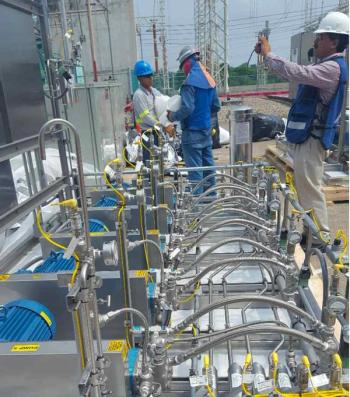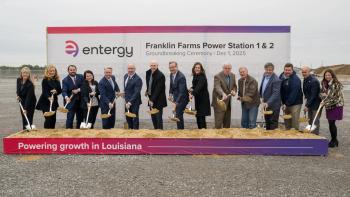
On the verge of takeover, Alstom highlights novel gas turbine innovations
As GE and Siemens consider buying Alstom, the OEM showcased some novel features of its gas turbine models. At stake in the takeover talks is the question of who can buy Alstom’s gas turbine business.
Alstom gas turbines’ burner arrangement and sequential combustion system offer extended part-load operations under emissions compliance as well as fuel flexibility. The upgraded GT26/GT24 successfully showed its capability of reaching 60 percent GT load in less than 10 minutes, taking purge credit into account.
The sequential combustion (2-stage) system of the gas turbines allows the GT26/GT24 to deliver and allow the associated KA26/KA24 combined cycles to stay fully on-line, to provide full stand-by spinning reserve at CCPP loads down to around 10-15 percent.
Low Load Operation
From this low load operation point, the KA26/KA24 combined cycle can ramp back-up to deliver more than 350 MW for the KA26-1 (1-on-1) configuration or more than 700 MW for the KA26-2 (2-on-1) configuration in less than 15 minutes and the KA24-2 can provide more than 500 MW within 10 minutes.
The extension of the GT26/GT24 operating window towards low loads is one of the focuses of the GT26/GT24 development since a couple of years.
A feature is the capability of “Low Load Operation” which allows “parking” the engine in combined cycle operation at very low plant loads during times of low electricity demand. With the latest upgrade of the GT26/GT24, the Low Load Operation has been enhanced, and it is capable of achieving a relative plant load of around 15 percent for KA26 and around 10 percent for KA24.
Minimum Environmental Load
The capability of “Low Part Load” operation has been developed to bridge the gap between the Low Load Operation and the standard operating window. The minimum load of the GT is typically limited by CO-emissions, which increase from base load towards lower loads, as the temperature level in the combustor goes down. The minimum achievable load is determined by the point where the CO-emissions exceed the permissible limit. This point is referred to as the “Minimum Environmental Load (MEL)”.
Low CO production
The Low Part Load operation of the GT26/GT24 extends the operating window towards lower loads while keeping the CO-emissions below the maximum limit. This is achieved by a shutdown of individual SEV-burners, which helps maintain the flame temperature of the burners in operation at a level with low CO production.
Various mappings have been done in order to determine the optimum number of burners in operation as a function of the GT load. The CO-emissions at the switching points drop when additional SEV-burners are shut off, because the remaining burners have to increase the firing level in order to maintain the same relative load. This leads to a significant reduction of the CO-emissions, which is close to 90 percent. For GT24, the same order of magnitude is expected.
Newsletter
Power your knowledge with the latest in turbine technology, engineering advances, and energy solutions—subscribe to Turbomachinery International today.





